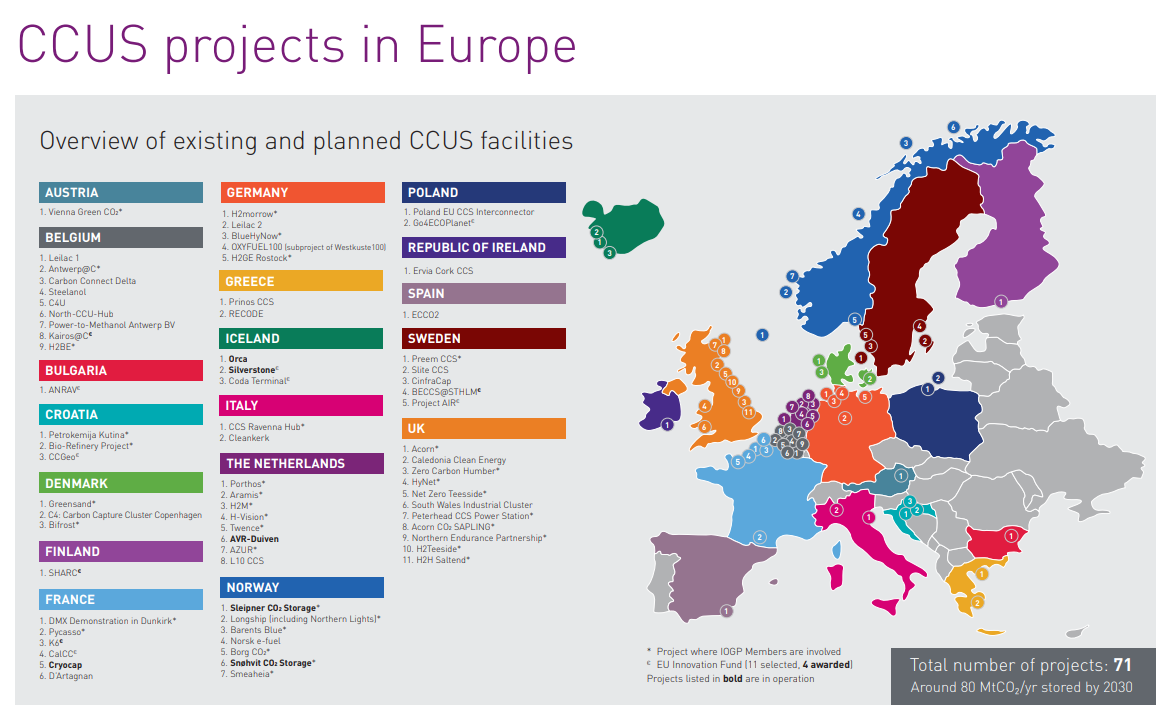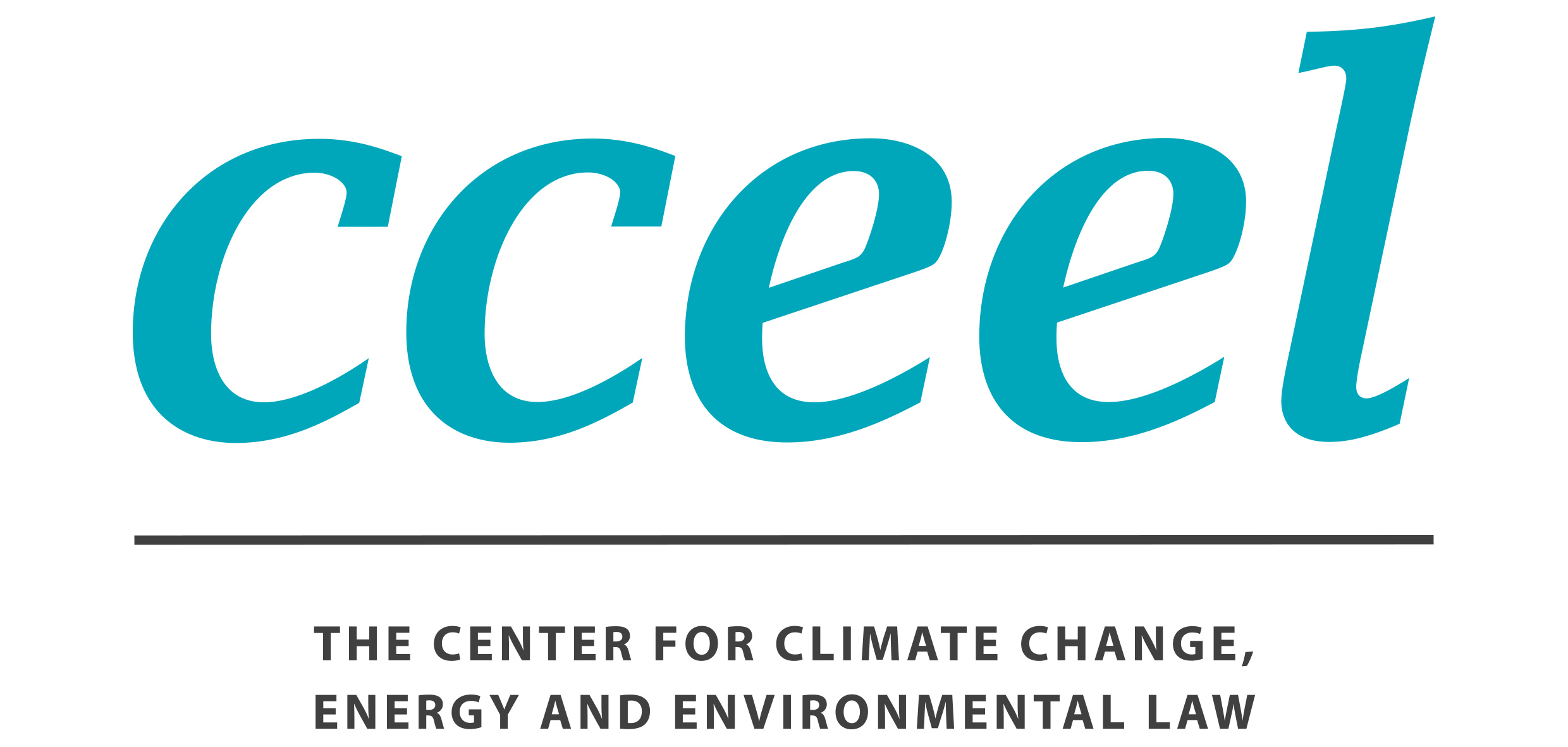Carbon Capture and Utilization under EU Law: A Step Towards Carbon Neutrality
By Reza Maddahi, PhD Researcher

Source: International Association of Oil and Gas Producers (2022)
The European Union (EU) is on a complex journey to achieve carbon neutrality by 2050. Among the strategies being employed, carbon capture and utilization (CCU) has become a crucial approach alongside carbon capture and storage (CCS). Both technologies play a significant role in tackling emissions from hard-to-abate sectors like cement and steel. However, the changing legislative environment is increasingly recognizing the importance of CCU, with a heightened focus on ensuring the permanence of carbon in the products generated through CCU technologies. This blogpost discusses the EU changing policy approach to CCU and regulatory challenges associated with it.
A Shift in EU Policy: Recognizing CCU’s Role
Historically, the EU’s regulatory framework favored CCS over CCU due to the former’s long-term carbon storage capability. However, recent policy developments have shifted this balance, and CCU is now gaining traction. For instance, the EU Emissions Trading System (ETS) Directive has been amended to recognize permanent carbon storage within specific products, signaling a broader acceptance of CCU in emissions reduction strategies. Notably, the European Commission is now tasked with defining the criteria for recognizing permanent storage, an essential step for the future of CCU technologies in the EU.
Legislative initiatives like the EU Net-Zero Industry Act and the EU Removals and Carbon Farming Certification (CRCF) Regulation also emphasize CCU’s potential. These measures help establish a legal framework that incentivizes carbon removal activities, including CCU, providing more precise guidelines for its incorporation into broader decarbonization efforts.
Understanding CCU: Impermanence in Storage
CCU involves capturing carbon dioxide (CO2) from industrial emissions or directly from the air and converting it into valuable products such as fuels, chemicals, or building materials. The duration for which CO2 remains stored varies depending on the product. While some applications—such as using CO2 in fuel production—may lead to the rapid release of carbon back into the atmosphere, others, like incorporating CO2 in construction materials, offer more extended storage periods, potentially spanning decades.
The challenge for EU lawmakers is how to handle the concept of permanence. Under the current EU ETS, CO2 that is captured and permanently stored is classified as “not emitted.” However, the impermanent nature of some CCU products’ CO2 storage raises legal questions. How long must carbon remain stored to be considered “permanent”? This issue carries financial implications, especially regarding eligibility for ETS allowances and other carbon credits.
Critical Applications of CCU: Diverse Benefits
CCU technologies span a wide range of applications:
CO2 to Fuels and Chemicals: CCU can reduce fossil fuel consumption by converting CO2 into fuels like methanol or methane and chemicals like urea. While fuels derived from CO2 can reduce emissions in the transport sector, their short carbon storage lifespan remains a concern.
Mineral Carbonation: This process, which converts CO2 into stable carbonates, is seen as a promising long-term storage solution. Not only does it offer extended carbon storage, but it also contributes to a circular economy by repurposing industrial residues.
Enhanced Oil Recovery (EOR): Although controversial due to its association with continued fossil fuel use, EOR can sequester significant amounts of CO2 during oil extraction. Similar principles apply to enhanced coal-bed methane recovery.
Biological Conversion: CCU can create biofuels and alternative proteins by using microalgae or cyanobacteria to fix CO2 through photosynthesis. These biological processes have considerable potential to mitigate emissions, particularly in the agricultural and food sectors.
Pre-Combustion Carbon Capture: An Underutilized Opportunity
Pre-combustion carbon capture is a less-discussed but potentially transformative approach to CCU, primarily through methane splitting. Methane pyrolysis can split methane into hydrogen and solid carbon, offering a carbon-negative pathway when using biogenic methane. This method bypasses the need to capture gaseous CO2 after combustion, providing an effective alternative to traditional post-combustion CCU. However, the current EU policy still needs to account for this pre-combustion method, which is missing an opportunity to further reduce emissions.
Legal Challenges: Defining Permanence and Utilization
The EU’s legal frameworks are grappling with how to define the permanence of carbon stored in products. The ETS Directive provides that GHGs that become “permanently chemically bound” in products and do not re-enter the atmosphere should be exempt from emission allowances. However, defining what constitutes “permanent” is complex. The CRCF offers some guidance by allowing products with at least 35 years of carbon storage to qualify as carbon removals.
Moreover, the Court of Justice of the European Union (CJEU) has expanded the scope of the ETS to include CCU, as demonstrated in the Schaefer Kalk case, where the court ruled that CO2 chemically bound in products like precipitated calcium carbonate should not be considered emitted.
The Road Ahead for CCU in EU Legislation
As the EU continues to refine its legal frameworks, it must balance the urgency of emissions reduction with the practical realities of CCU technologies. Recent amendments to the ETS and the introduction of the CRCF represent significant steps forward, but more work remains to fully integrate CCU into the EU’s decarbonization strategy. Specifically, expanding the definition of carbon capture to include pre-combustion processes and providing more precise criteria for carbon permanence will be crucial.
The Net-Zero Industry Act, focusing on boosting Europe’s green technologies, provides a promising opportunity to integrate CCU more comprehensively. By recognizing CCU’s role in producing sustainable fuels and creating long-term carbon sinks, the EU can better align its policies with its ambitious climate goals.
